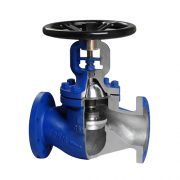
Different types of valves are used in the process of pipe connection. There are several functions of valves; however, their use largely depends on the industry in which they are used. Furthermore, the method also varies with the type of valve being used. We will cover the basic types of valves in this blog. However, we would start by defining what a valve is.
You might already know what a valve is, but it costs nothing to refresh memory and give a quick review. A valve is a gadget or device which is usually used to control, direct, and regulate the fluid flow. It does so by closing, opening, or partially blocking the flow of the fluid. Let us simplify this a bit more for you! A device that has the ability to control the pressure and flow of fluids by allowing and disallowing it is called a valve.
Several types of valves are used in the piping system; however, the use is always identified in accordance with the need. Each valve contributes to 20-30% of the overall piping cost. You have to study your requirements carefully because if you choose a more expensive type for a need that can also be satisfied with a cheaper one, you are just wasting time and resources.
Each type can have further classifications. You might happen to end up finding a hybrid kind of valve. One vendor can provide all types such as globe valves vendors can also offer you ball valves. Furthermore, the angle and dimension points can also be variable, so you would need to take care of this aspect.
As we have already discussed, valves are the gadgets that are used to control the pressure and flow of the fluid. Thus, its pretty much clear that it is the primary function of valves. In this section, we would discuss some of the features of the valves which are not evident from its definition, such as:
It helps in throttling the fluid flow. The percentage of the valve opened defines how much fluid is allowed to pass.
Automatic control valves help in automatic regulation of fluid flow.
They help in keeping the piping system from overpressure. Thus, they help in the maintenance of a vacuum.
They also help you decide the way in which the liquid should flow. This is why you should take care of the angle and dimension of valves.
They also help in the isolation of fluid flow. The common types which help in isolation include ball, needle, plug, and globe valves. You can contact your globe valves vendors to have it confirmed as well.
From port connections to regulating the fluid flow and pressure, valves are extremely helpful. Not only that, they help in ideally controlling and throttling the fluid, they also help in optimizing the way in which the liquid should flow. However, the point of consideration remains to be the type of valve that you choose to perform a function. Always remember that if the need can be satisfied using a ball valve, you do not need to buy a butterfly valve! It is true that the valve size matters but it matter only in correspondence with the pipe they work with, otherwise, choosing a larger valve is just a waste of money.